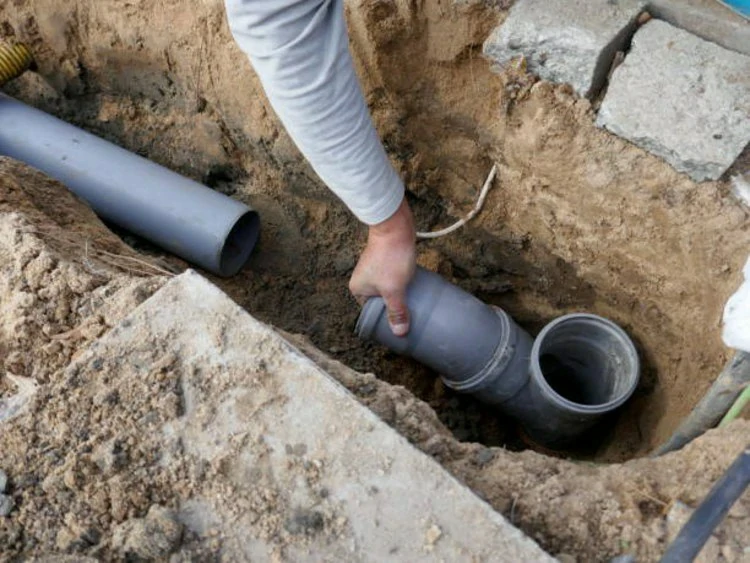As the construction industry evolves, the choice of piping materials plays a pivotal role in shaping the efficiency, durability, and environmental impact of various projects. This article conducts a comparative analysis between High-Density Polyethylene (HDPE) pipes and traditional piping materials, exploring the key differences that make HDPE pipes stand out in the realm of modern construction.
1. The Evolution of Piping Materials: A Brief Overview
1.1 Traditional Piping Materials
Traditional piping materials, including metal (such as copper and steel) and concrete, have been the go-to choices for decades. These materials have demonstrated strength and reliability in conveying fluids and gases, contributing to the development of infrastructure worldwide. However, their limitations in terms of corrosion, weight, and environmental impact have led the industry to explore alternative solutions.
1.2 Introduction to HDPE Pipes
HDPE pipes have emerged as a revolutionary alternative to traditional materials. Composed of high-density polyethylene, these pipes offer a unique set of characteristics that address the shortcomings of conventional materials. HDPE pipe are known for their durability, flexibility, and eco-friendly features, making them increasingly popular in a wide range of construction applications.
1.3 The Need for a Comparative Analysis
Given the diverse range of applications and environments in which pipes are utilized, a comparative analysis becomes crucial. Understanding how HDPE pipes compare to traditional materials provides valuable insights for industry professionals, engineers, and decision-makers seeking the most suitable piping solution for their projects.
2. Comparative Analysis: HDPE Pipes vs. Traditional Materials
2.1 Material Composition and Characteristics
Traditional Materials: Metal pipes are susceptible to corrosion, leading to degradation over time. Concrete pipes, while durable, can be heavy and prone to cracking.
HDPE Pipes: Composed of high-density polyethylene, HDPE pipe are corrosion-resistant, lightweight, and flexible. They exhibit exceptional strength and resilience, making them suitable for diverse applications.
2.2 Installation and Handling
Traditional Materials: Metal pipes can be heavy and challenging to handle, requiring specialized equipment for installation. Concrete pipes may also pose handling difficulties due to their weight.
HDPE Pipes: The lightweight nature of HDPE pipe simplifies handling and installation. Their flexibility allows for bending and maneuvering, reducing the need for complex joints and fittings.
2.3 Longevity and Maintenance
Traditional Materials: Metal pipes may require coatings or linings to resist corrosion, and their lifespan can be affected by environmental factors. Concrete pipes may crack or degrade over time.
HDPE Pipes: Known for their long lifespan, HDPE pipe require minimal maintenance. Their resistance to corrosion and chemical degradation contributes to extended service life, reducing the need for frequent replacements.
2.4 Environmental Impact
Traditional Materials: The extraction and processing of metals contribute to environmental degradation. Concrete production is energy-intensive and generates significant carbon emissions.
HDPE Pipes: HDPE pipes are recyclable and have a lower carbon footprint. The manufacturing process consumes less energy, contributing to a more environmentally friendly choice.
3. Applications and Considerations in Selecting Piping Materials
3.1 Versatility in Applications
HDPE pipes find applications in various sectors, including water supply, sewage systems, gas distribution, and industrial processes. Their versatility makes them suitable for both above-ground and underground installations.
3.2 Economic Considerations
While the initial cost of HDPE pipes may vary, their long-term benefits, including reduced maintenance expenses and extended service life, often make them a cost-effective choice compared to traditional materials.
3.3 Environmental Sustainability
HDPE pipes align with the growing emphasis on sustainable construction practices. Their recyclability, lower energy consumption in manufacturing, and resistance to corrosion contribute to environmentally responsible infrastructure development.
Conclusion:
In conclusion, the comparative analysis underscores the advantages of HDPE pipe over traditional piping materials. Their superior characteristics, including durability, flexibility, and environmental sustainability, position HDPE pipe as a modern solution for diverse construction projects. As the construction industry continues to prioritize efficiency, longevity, and environmental responsibility, the adoption of HDPE pipes emerges as a forward-thinking choice in the evolution of piping materials.
Contact
IFANPLUS is a professional manufacturer of plastic pipes, fittings, and various types of valves in China. If you are interested in our PPR valves, pipes, and fittings, feel free to contact our experts. Explore our diverse range of drainage valve products, including PPR and PVC pipes in German and American standards, as well as various types of valves. We offer a variety of standard pipes to meet your specific requirements. Click here to learn more about our products.
We will reply your email or fax within 24 hours.
You can call us at any time if there is any question on our production.
For more information,pls visit our webside https://www.ifanplus.com/
Pls Mailto: [email protected]






